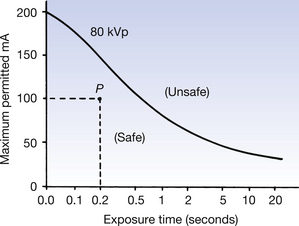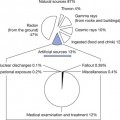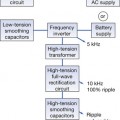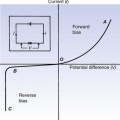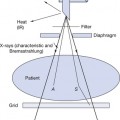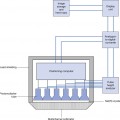Chapter 31 Monitoring and protection of X-ray tubes
31.1 Aim
The aim of this chapter is to enable the reader to understand the concept of the rating of X-ray tubes and why it is monitored. The chapter will discuss factors which affect tube rating and the effects of single and multiple exposures on rating of the X-ray tube. An example of how a microprocessor is used to monitor these effects and prevent damage to the X-ray tube is illustrated.
31.2 Definition of rating
The general term rating is used to describe the practical limits that are inherent in any device. An example of this is that a fuse rated at 5 amperes will tolerate currents up to 5 amperes. If a current above 5 amperes passes through the fuse, then the fuse will melt, causing a break in the circuit. A high-tension transformer is a more complicated device than a fuse and so has a more complicated set of rating conditions (see Sect. 14.9). Similarly, the rating of an X-ray unit – the X-ray tube and the associated equipment – depends both on how it is constructed and how it is being used. The rating may be defined as follows:
31.3 Single exposures
The rating for a single exposure is affected by a number of different factors; some of these are under the control of the operator while others are not, as shown in Table 31.1 (see page 232).
Table 31.1 Factors affecting the rating of a particular X-ray tube
| SELECTABLE FACTORS | FIXED FACTORS |
|---|---|
| kVp mA | Rectification type |
| Rating of high-tension transformers | |
| Exposure duration | capacity of anode |
| Focal spot size | Diameter of anode |
| Operating mode – fluoroscopy or radiography | Speed of anode rotation |
| Anode angle | |
| Thermal capacity of tube shield | |
| Efficiency of heat loss from anode and tube shield |
In any particular unit, the non-selectable factors are fixed, so a rating must be used which is applicable to that set of circumstances, e.g. a rating appropriate to an X-ray tube connected to a two-pulse unit. The rating can be plotted as a graph showing the effect on the rating of varying the quantities in the selectable group. A simplified form of such a graph is shown in Figure 31.1. Here the rating curve corresponds to a 1.2-mm focus selection and a kVp selection of 80 kVp. The curve indicates the upper limit for all combinations of mA and time for this value of kVp. The points below the line are safe, whereas points above the line are unsafe because they would result in unacceptable damage to the X-ray tube. If we consider an exposure of 80 kVp, 100 mA and 0.2 seconds, then we can see that this exposure may be safely made, as the point P is below the 80-kVp line. Note that because of the wide range of exposure times possible, it is usual to use a logarithmic scale on the x-axis.
In clinical practice, a range of kVp values is applied to the X-ray tube. Rating calculations take this and the focus size into account, producing separate rating graphs for broad and fine focus. Examples of such graphs are shown in Figure 31.2. Figure 31.2A
Stay updated, free articles. Join our Telegram channel

Full access? Get Clinical Tree


